Nowadays, Halloween is a night synonymous with ghouls, gore, and scares — but not very long ago at all, it was a holiday for heart-eyed lovers looking for their spouses.
Halloween as we know it today is a conglomeration of a few traditions and festivals, mostly of Irish, Scottish, and English origin.
Recommended Videos
These include the Celtic Samhain, a pagan harvest festival, and its later Christian iteration, All Hallows’ Eve. As immigrants from these areas settled in the U.S. in waves, they brought their religious customs with them, creating a steadily evolving concept of Halloween in America.
From the first colonial settlers onwards, commemorations of the holiday blended new and old, European and American, religious and secular.
As a result, Halloween used to look quite a bit different in centuries past than it does today. Oct. 31 has gone through eras of being religious, violent, romantic—and sometimes all of those things at once.
Stacker put together a list of 15 long-gone Halloween traditions using historical documents, news sources, and academic research.
While it might be clear how some of these evolved to become the spooky games we know and love — for instance, turnip lanterns aren’t too far from jack-o’-lanterns, much like how going door-to-door for “soul cakes” isn’t too far removed from trick-or-treating for candy — others might be entirely unrecognizable (it’s probably been more than a few years since someone has wished you a happy “Nut Crack Night.”)
Some traditions aren’t as long-held as we might think, either; trick-or-treating became popular in its current form around the 1950s, and receiving specially packaged Halloween candy only became largely popular in the 1970s.
Read on to discover what All Hallows’ Eve pastimes were popular in decades past.
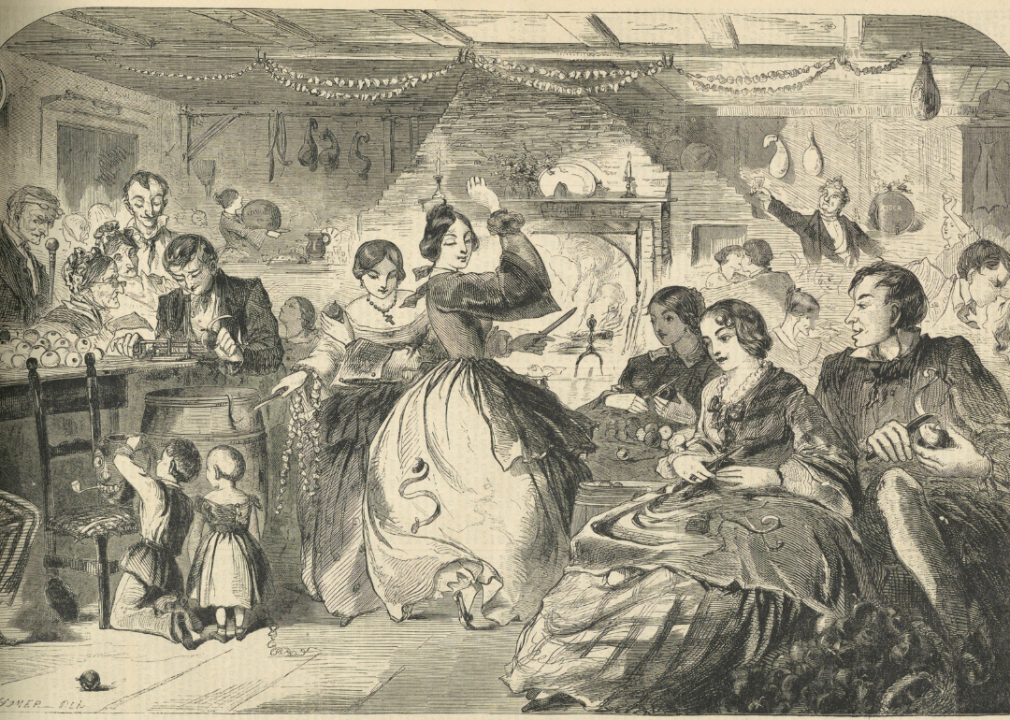
Sepia Times // Getty Images
Throwing apple peels to predict one's romantic future
There's a reason apples are synonymous with the Halloween season: They have been symbols of immortality and fertility in many cultures for centuries and were used during the Celtic festival Samhain to commemorate the end of the annual harvest. When European settlers first made their way to New England in the early 17th century, they brought these traditions along with them.
Each autumn during this period, young single women would throw apple peels over their shoulders; the letter formed by the peel on the floor was supposedly the initial of her future spouse. This practice gradually evolved into the more recognizable apple-centric fun we partake in today, including bobbing for apples.
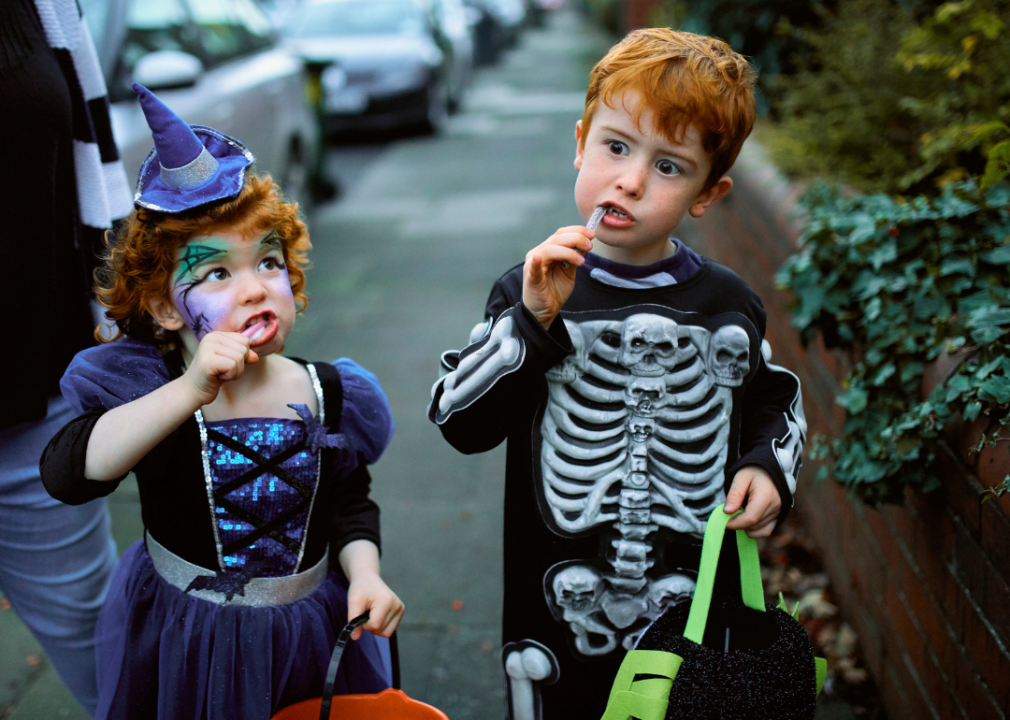
Canva
Wreaking violence and vandalism
A good-natured prank or two is to be expected on Halloween night, but up until the mid-20th century, vandalism, assault, and violence on Oct. 31 was a real source of harm in cities throughout America.
It is possible that this trend had roots in Ireland and Scotland, Lisa Morton, author of "Trick or Treat: A History of Halloween," told History, but by the late 1800s in America, outhouse-tipping and vegetable-uprooting between neighbors were common practices on Halloween. Things soon got out of hand by the early 1900s; young people in cities gathered in masses to set off pipe bombs, throw bricks through windows, and hound unsuspecting passersby.
The solution to this "Halloween problem" grew popular from about the 1930s to the 1950s and led to the wholesome, family-friendly holiday we know today. To keep young people out of trouble, towns across the country started encouraging adults to have sweets at the ready to placate them, giving them the option of satisfying them with treats to avoid their tricks.
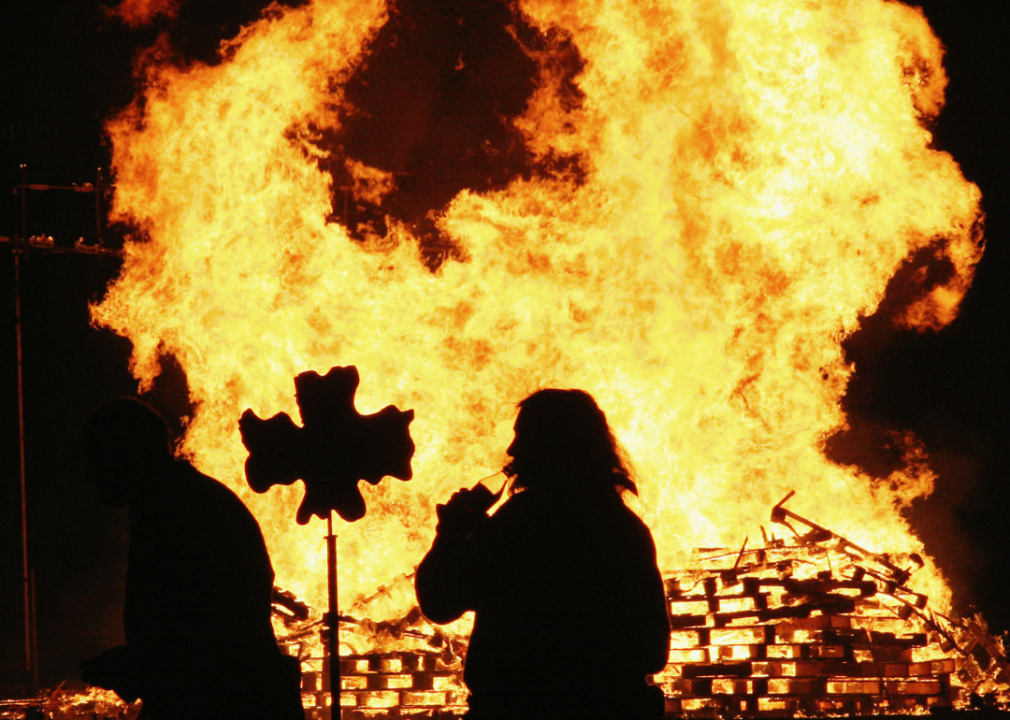
Dave Etheridge-Barnes // Getty Images
Building bonfires
Up until the first half of the 20th century, tall, blazing bonfires were part and parcel of celebrating Halloween night. There are a few theories as to how this tradition began, one being that it translated over to the U.S. from the U.K., where Brits have celebrated Guy Fawkes Night on Nov. 5th—also known as Bonfire Night—with towering flames since 1606.
It is thought that these infernos played the role of guiding wandering spirits out and about on Halloween toward the afterlife. Perhaps due to safety concerns and general convenience, these giant fires have largely been replaced by candles.
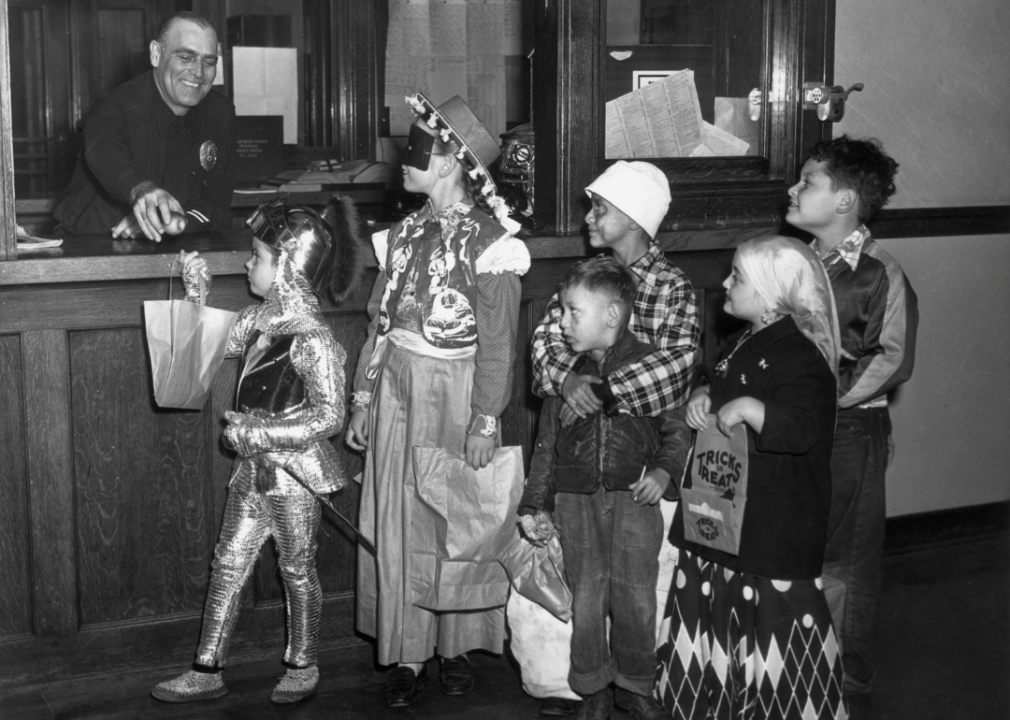
American Stock Archive // Getty Images
Giving out anything but candy to trick-or-treaters
It may seem unimaginable to us now, but receiving candy on Halloween is a relatively new tradition. Until the mid-20th century, children could instead expect to receive fruit, nuts, or even small amounts of money while going door-to-door. This is because earlier Halloween festivities more closely resembled the holiday's European origins as a harvest festival, centering around seasonal fruits like pumpkins and apples.
After trick-or-treating took widespread hold around the 1950s, candy companies began to catch on that there was money to be made and started marketing more aggressively around the holiday. This, paired with fears around the dangers of children receiving unwrapped treats from strangers, made candy the reigning king of Halloween by the 1970s.
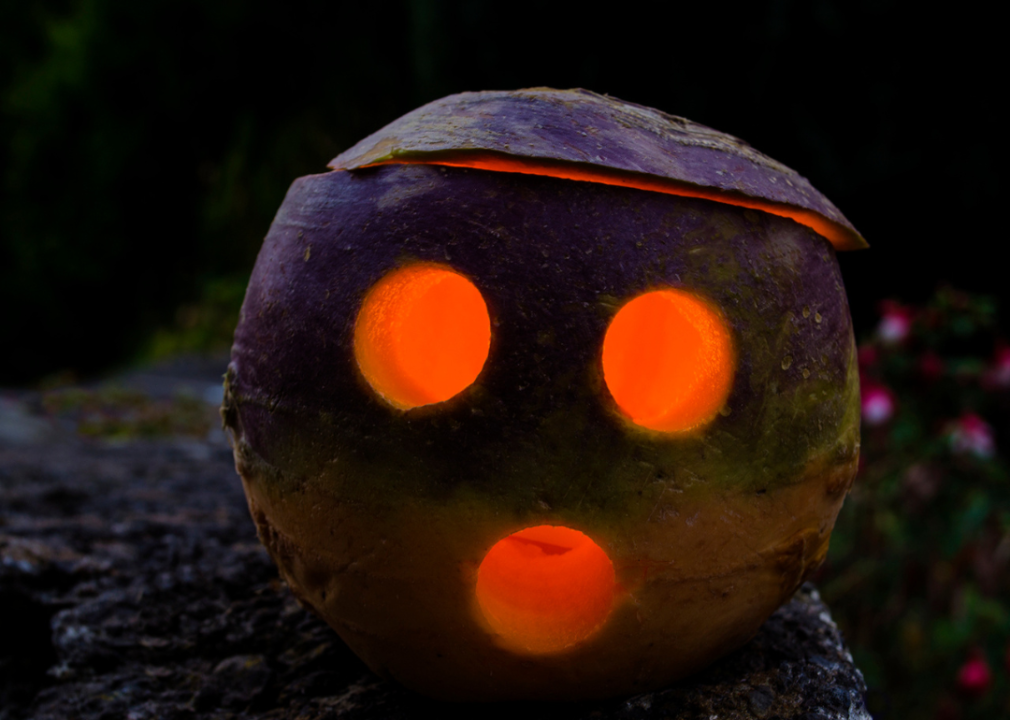
Canva
Making jack-o'-lanterns out of turnips, potatoes, or beets
Jack-o'-lanterns are a long-held Halloween staple, but they used to look quite different from today's grinning orange pumpkins. The portable light source goes as far back as 17th century Ireland with the legend of Stingy Jack struggling to light his way in the dark after tricking the Devil many times over.
Samhain revelers during this time often carved out potatoes, turnips, and other root vegetables to make lanterns while going door-to-door, a practice Irish immigrants carried over to America upon fleeing the Great Potato Famine of the 1840s. Upon arrival in the U.S., however, they discovered a bigger and more easily-carved crop to replace beets: the pumpkin.
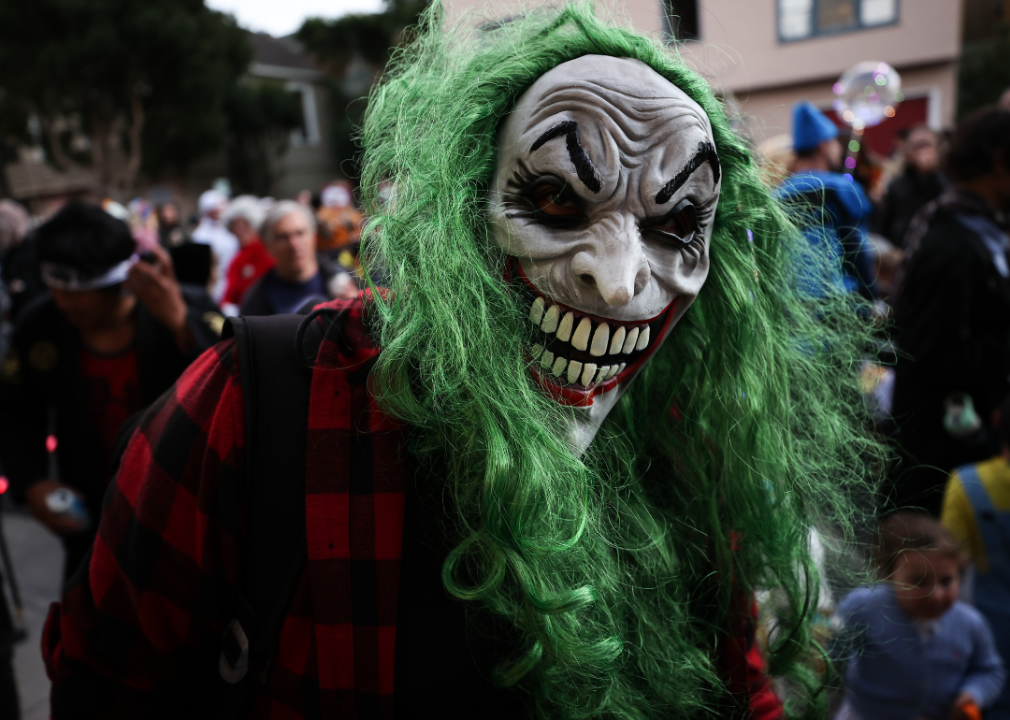
Anadolu Agency // Getty Images
Scrying for romance
Scrying—the practice of staring into a crystal ball or other reflective surface to divine one's future—was used for romantic purposes on Halloween night, as were many other retired traditions from Oct. 31.
Throughout the early 20th century, a single woman would stare into a mirror and recite a chant in a dark room on Halloween night in hopes of seeing the face of her future husband; if her future held her dying before marriage, a skull would appear instead. This probably emerged from a longtime history across cultures of using mirrors to determine the future and summon spirits (a round of Bloody Mary, anyone?).
Over the course of the 20th century, however, commercial and social changes transformed Halloween from a matchmaking-focused holiday to the spooky celebration we know and love today.
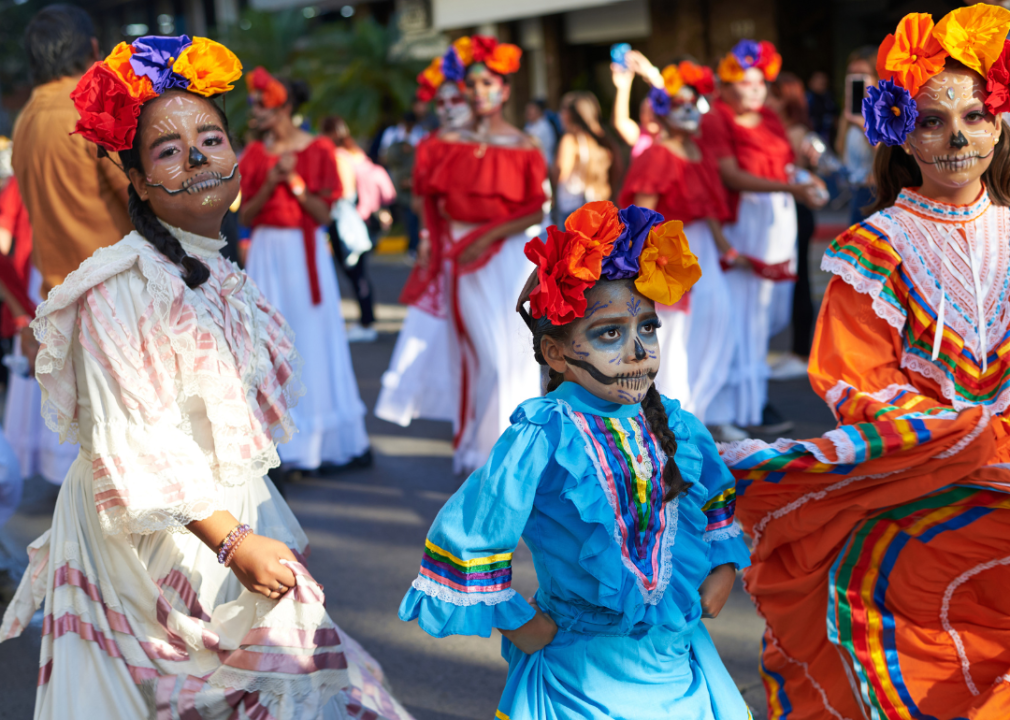
Majority World // Getty Images
Communicating with dead loved ones
Besides looking into the future, reaching back into the past was also a common Halloween activity in late-19th and early 20th-century America. This was carried over from Halloween's roots in the Samhain festival. People believed that in this transition period between the harvest and winter, the door between the afterlife and the living world was at its thinnest.
When Irish and Scottish settlers arrived in America, their traditions came with them and coincided with Americans' fascination with the spiritual. During this period, Halloween was often commemorated by hosting seances and other attempts to speak to those in the afterlife.
As the years went by, however, the American spiritualist movement was largely debunked and fell out of favor, shifting Halloween into a more entertainment-focused holiday. Today, connecting with deceased family members in America is more closely associated with All Souls' Day and Día de los Muertos.
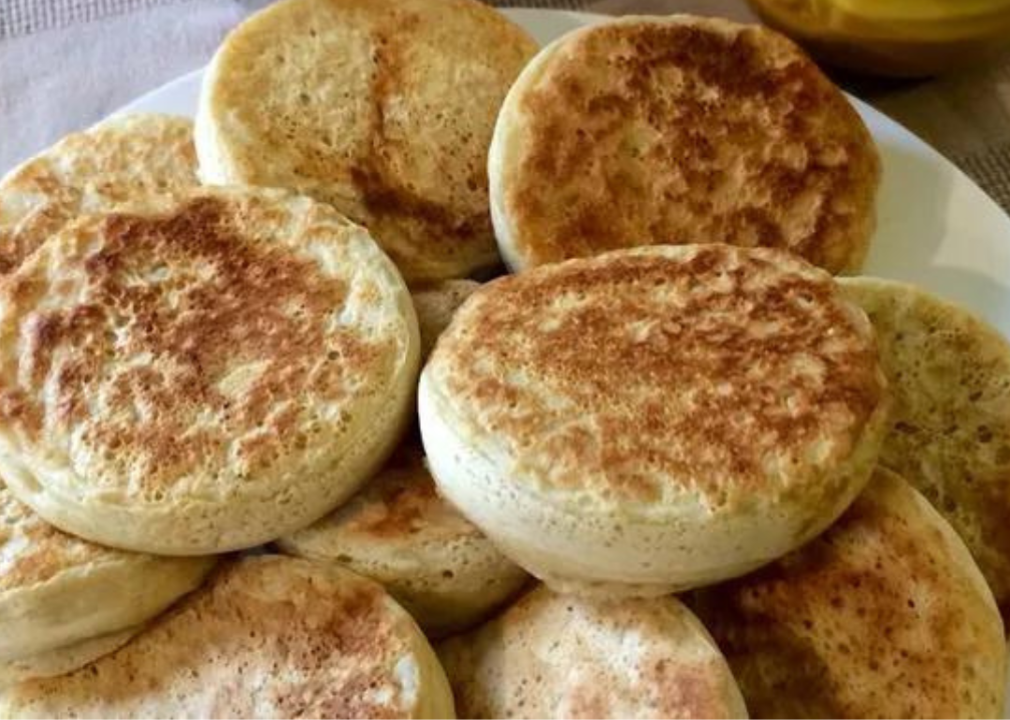
All Recipes
Baking soul cakes
Yet another tradition adopted from the Samhain festival are soul cakes, which have been baked across the Atlantic to pay for offerings to the dead as far back as the 8th century (one soul cake given, one soul saved).
Once Irish and Scottish immigrants made their way to the U.S. in large waves in the mid-19th century, this tradition became adopted into American Halloween festivities. "Soulers"—usually children and people without any means—went door to door offering songs and prayers in exchange for these small shortbread-like cakes.
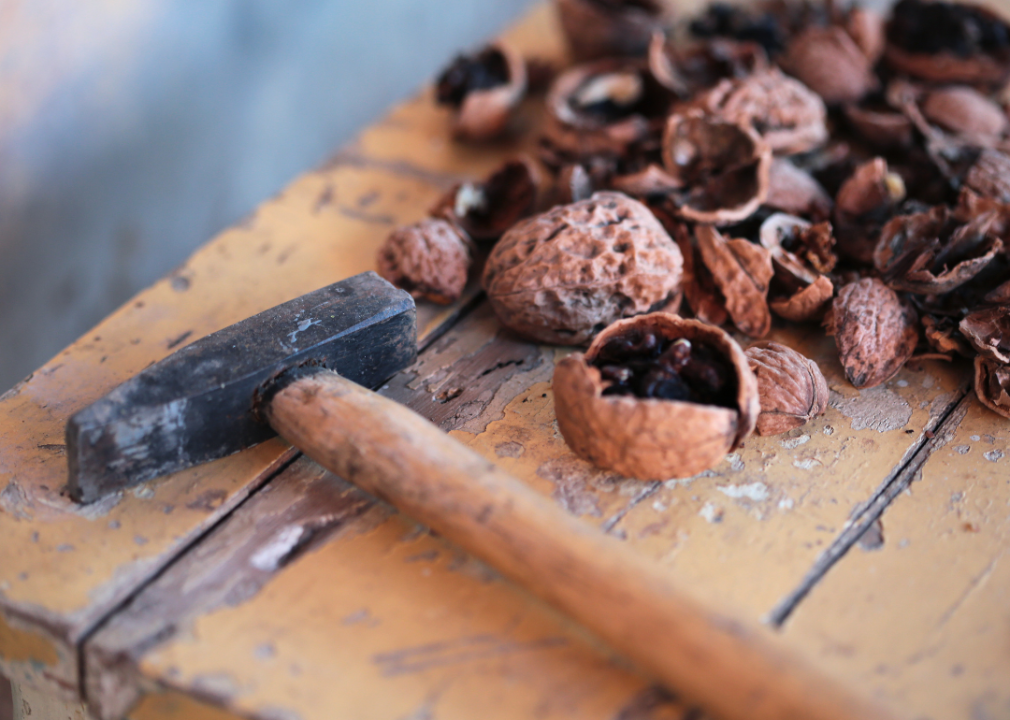
Canva
Celebrating 'Nut Crack Night'
Nuts used to play a far more central role in Halloween than they do today (which is to say, it is now virtually nonexistent). In Britain and Scotland, Oct. 31 was known as Nut Crack Night, during which freshly harvested nuts would be eaten aplenty and their shells tossed on the fire for divination.
In the middle of the 19th century, when Halloween was much more closely associated with romance and fortune-telling than candy and gore, Americans continued this ritual. This would sometimes mean marking nuts with different names and seeing which burned the brightest in the fire to tell the identity of a future spouse; other times, couples would test their relationship's longevity by throwing two nuts into the flames and seeing if the nuts in the fire ended up close together.
After the early years of the 20th century, however, Halloween's romantic spin started to wane in popularity, at least in part due to the growing autonomy of American women over their lives, romantic or otherwise.
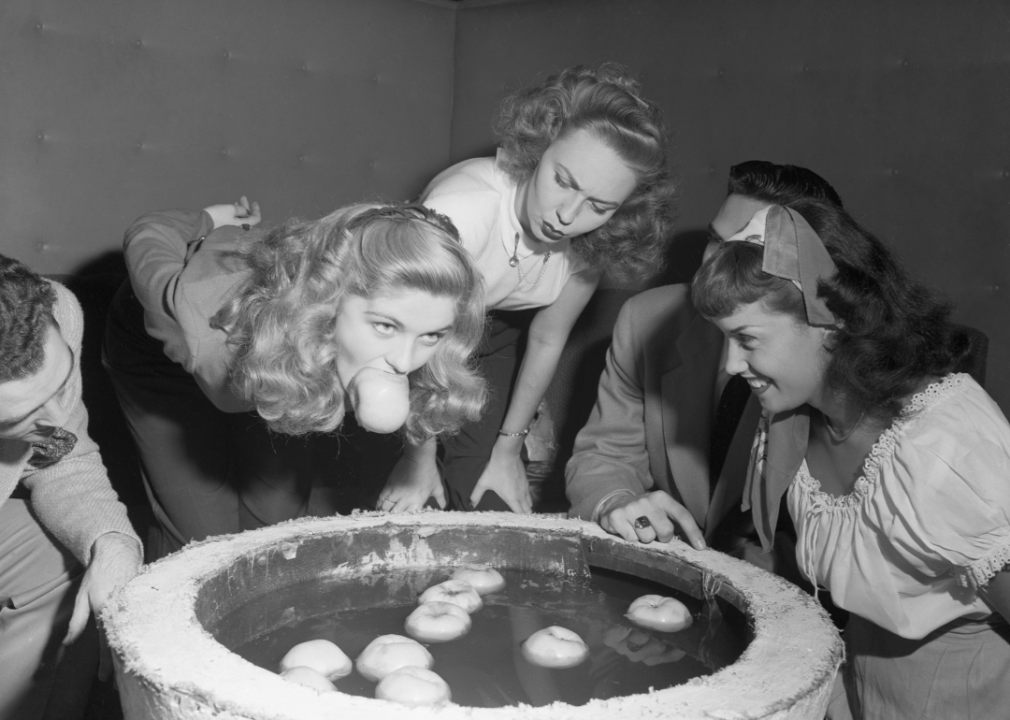
Bettmann // Getty Images
Bobbing for apples to find a husband
Bobbing for apples remains a familiar Halloween tradition today—but it used to have a far different goal than just fun. After arriving in the U.S., the first European settlers in New England brought many holiday pastimes with them, including the yearly end-of-harvest festival.
Around this time, young single women would bob for apples in just the same way we do today, but with a catch: They first secretly marked apples to signify different potential suitors, and whichever one they managed to bite into represented their destiny.
This continued for centuries until the idea of Halloween as a time for matchmaking dwindled at the start of the 20th century.
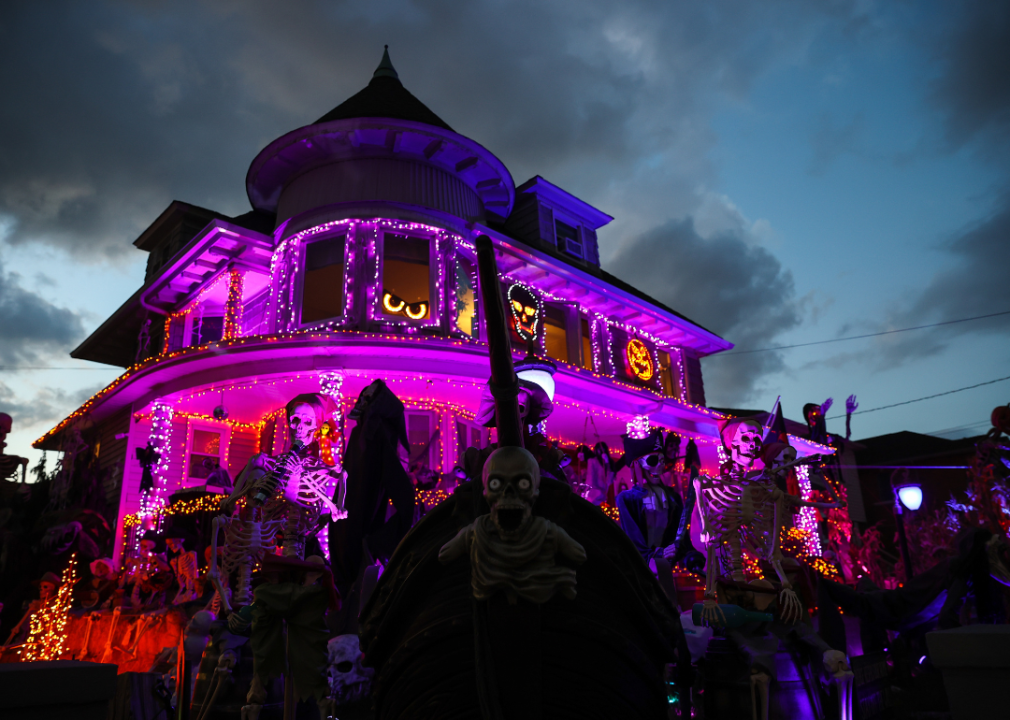
Anadolu Agency // Getty Images
Decorating with yellow and brown
Orange, black, purple, and green might seem like visual staples of Halloween to us now, but it was not always this way. At the beginning of the 20th century, the holiday was more commonly celebrated using yellow and brown, "Trick or Treat" author Morton told Today, since these colors were associated with corn, hay, and other harvest signifiers.
Once the pumpkin usurped root vegetables as the spooky crop of choice, the modern Halloween color was set. Purple and green came into the picture later, possibly due to the influence of trendsetting Hollywood depictions of green-faced witches like in "The Wizard of Oz."
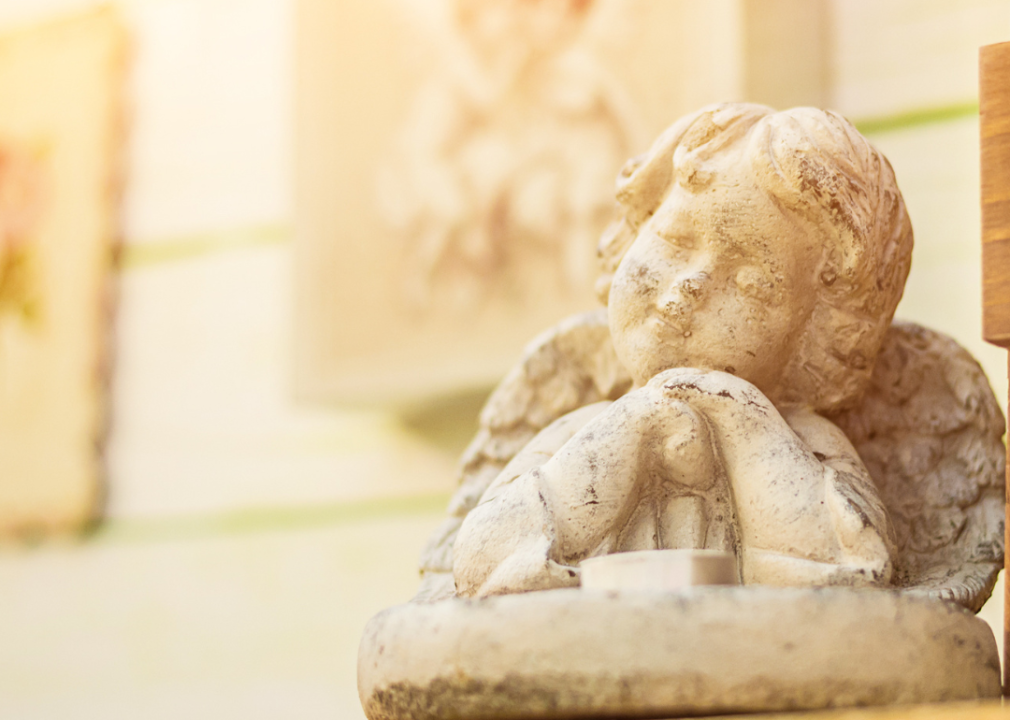
Canva
Hanging images of Cupid as decorations
If it isn't clear enough by now, Halloween used to be the reigning holiday of love (as strange as that may be). Cupid used to be a central character on Oct. 31, used in decor along with still-familiar jack-o'-lanterns and black cats in the early 20th century.
Similarly, witches were once depicted culturally for centuries as alluring, siren-like figures, and have only more recently been recast as scary or threatening.
Early 1900s Halloween celebrations probably focused on courtship because, at the time, the holiday was seen as a mostly feminine celebration, emphasizing activities at home: decorating, hosting domestic gatherings, and fostering relationships. As women's roles broadened and evolved beyond the realm of matchmaking, so too did Halloween break out of the house.
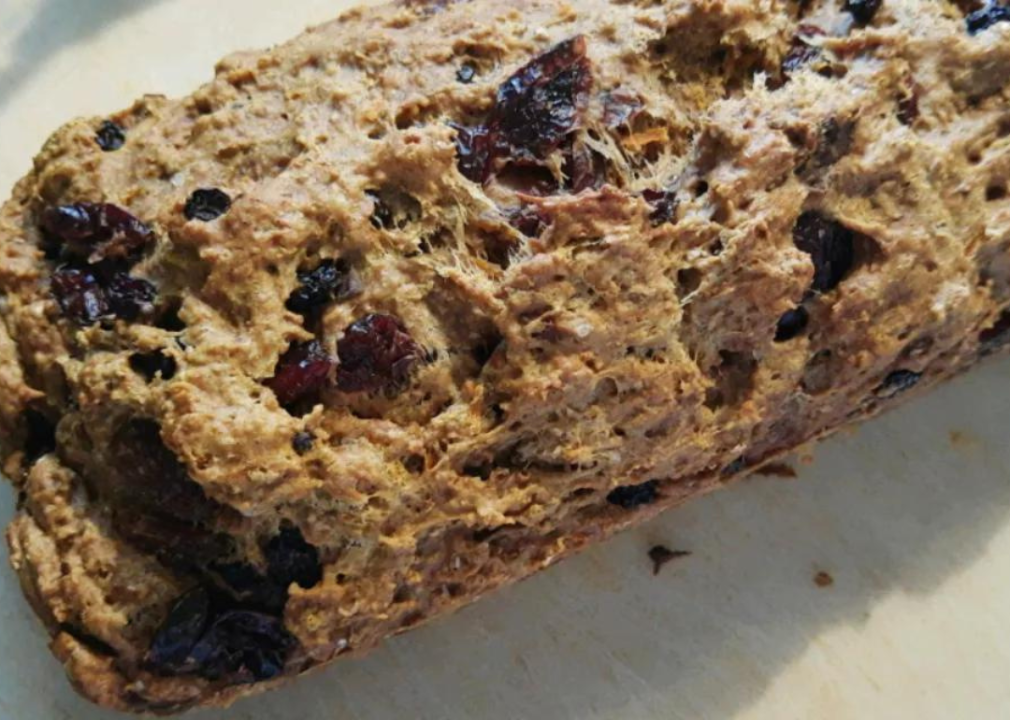
All Recipes
Charm cakes
When the Europeans immigrated to the United States, they brought with them the idea of "charm cakes," which contained different trinkets that each held varying meanings for one's future. A ring, for instance, signified marriage on the horizon, while a coin meant a windfall was coming your way. This tradition likely came from Irish barmbrack, a sweet bread traditionally baked around Halloween that also contained fortune-telling charms.
After Halloween started to shift away from a romantic focus in the early 20th century, some recipes for charm cakes still hung around as novelties, though instead of romance, they were aimed at bestowing good luck until the next Halloween.
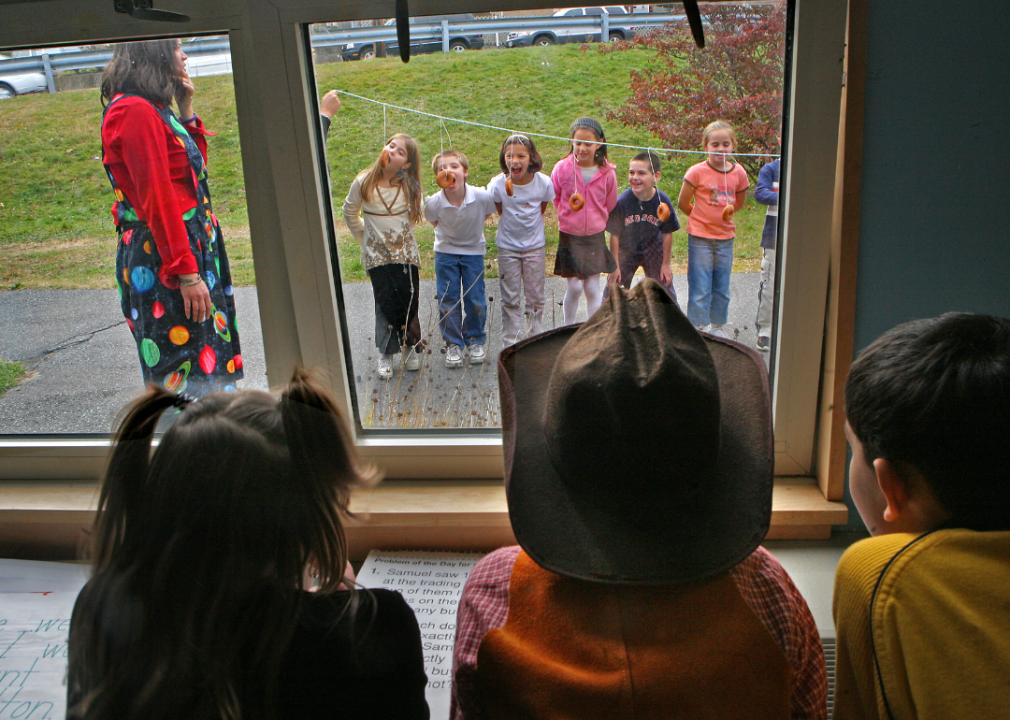
Boston Globe // Getty Images
Snap-Apple
Any Charles Dickens buff will be familiar with the alarmingly dangerous Victorian-era Christmas game of Snapdragon; its Halloween counterpart, equally as risky, was known as Snap-Apple.
For hundreds of years, many British citizens had called Halloween 'Snap-Apple Night' due to the popularity of the game, which spread to the U.S. thanks to the influence of British transplants. The version described by Diane Arkins in her book, "Halloween: Romantic Art and Customs of Yesteryear," is tamer than its older counterpart, involving no hot wax.
The old-school rules are as follows: An apple was hung from one end of a wooden plank, a burning candle from the other; participants tried to catch the apple in their mouth as the plank was spun around, with the unsuccessful receiving a face full of hot wax instead.
It's clear to see how this game evolved into the still-popular bobbing for apples and eating donuts off of strings; both of which, thankfully, are far less traumatizing.
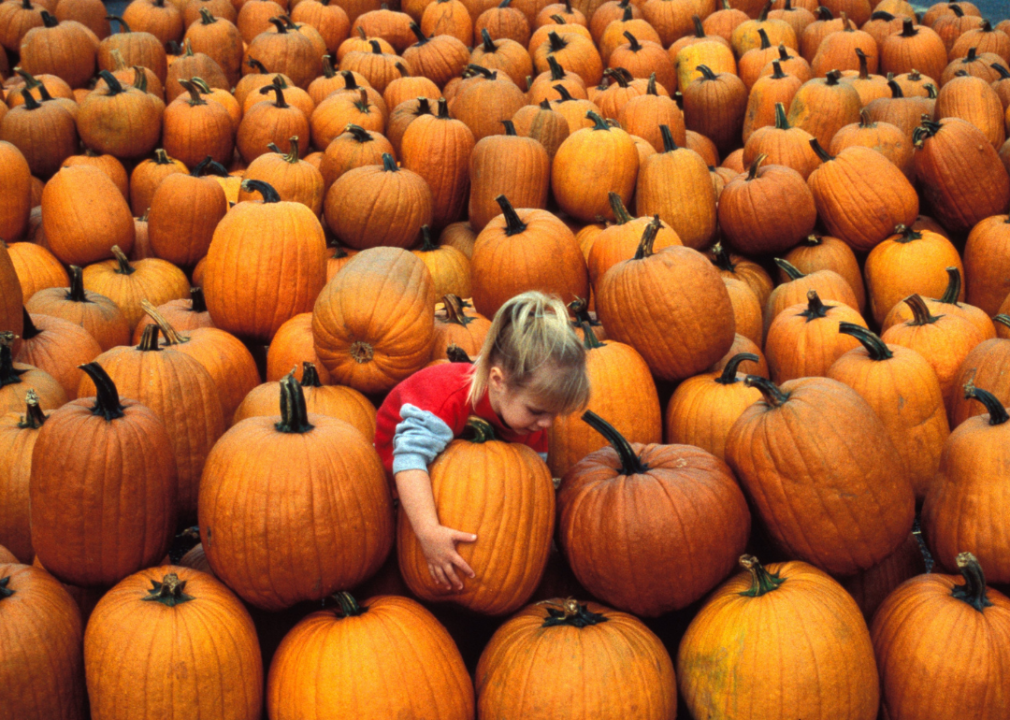
Jeff Greenberg // Getty Images
Using cabbages for fortune-telling
Back when Halloween was still gaining popularity in America in the 19th century, one newspaper article dismissed it as nothing more than "Cabbage Night." This was in recognition of the many ways that cabbages used to make their way into early American Halloween celebrations, including a tradition in which young women would pull up the vegetables from the garden, hoping for a hefty amount of dirt to come with it (this meant she would get married to a rich suitor in under a year).
A similar trick had young women stealing cabbages and pinning them above their doors. The man the cabbage would eventually fall on would become her future husband, or so they say. The unique use of cabbages was carried over to America by the British, who had traditionally used them and other plants in Samhain-centered superstitions for centuries.
Gradually, however, America's pumpkins proved themselves a more novel—and colorful—crop of choice for celebrations.
Story editing by Carren Jao. Copy editing by Tim Bruns. Photo selection by Ania Antecka.
Check out the Florida Foodie podcast. You can find every episode in the media player below: